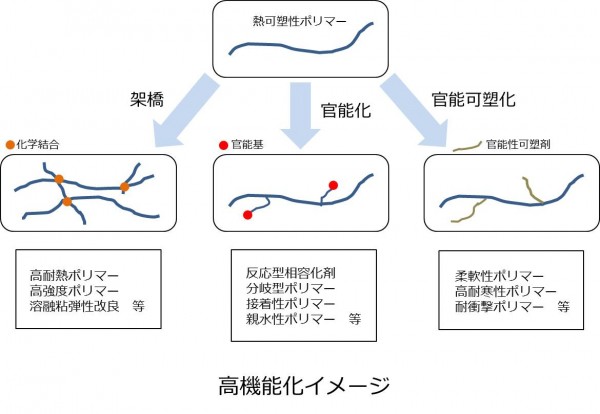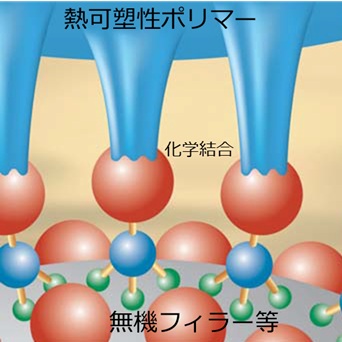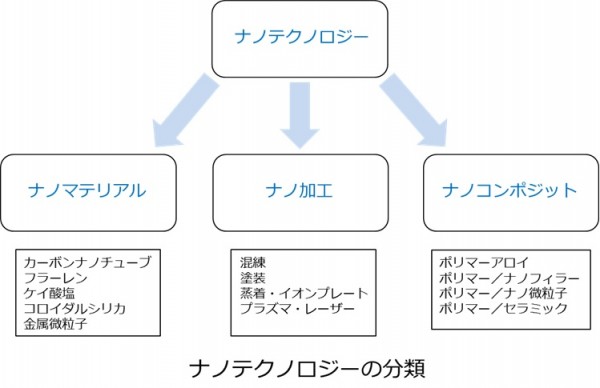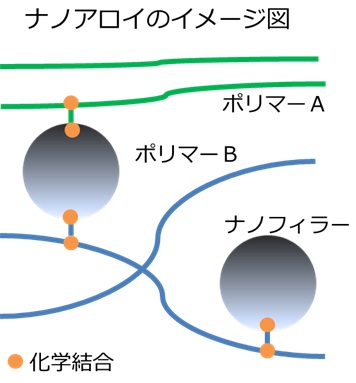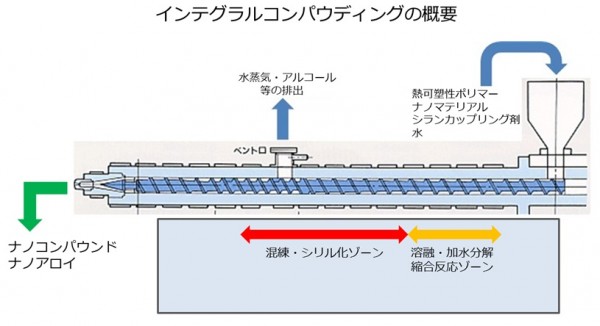As
shown in the overview of reactive processing in the figure above, by adding
functional monomers that impart functionality, reaction modifiers that
sequentially initiate chemical reactions, and catalysts as needed to the base
thermoplastic polymer according to the application and purpose, and applying
appropriate chemical reaction conditions (temperature, reaction completion
time), it is possible to add functionality not found in the original
thermoplastic polymer.
The
following are some examples of high functionality.




